Gutenberg Bible leaf and so much more. Q&A with Mills College at Northeastern library director Janice Braun
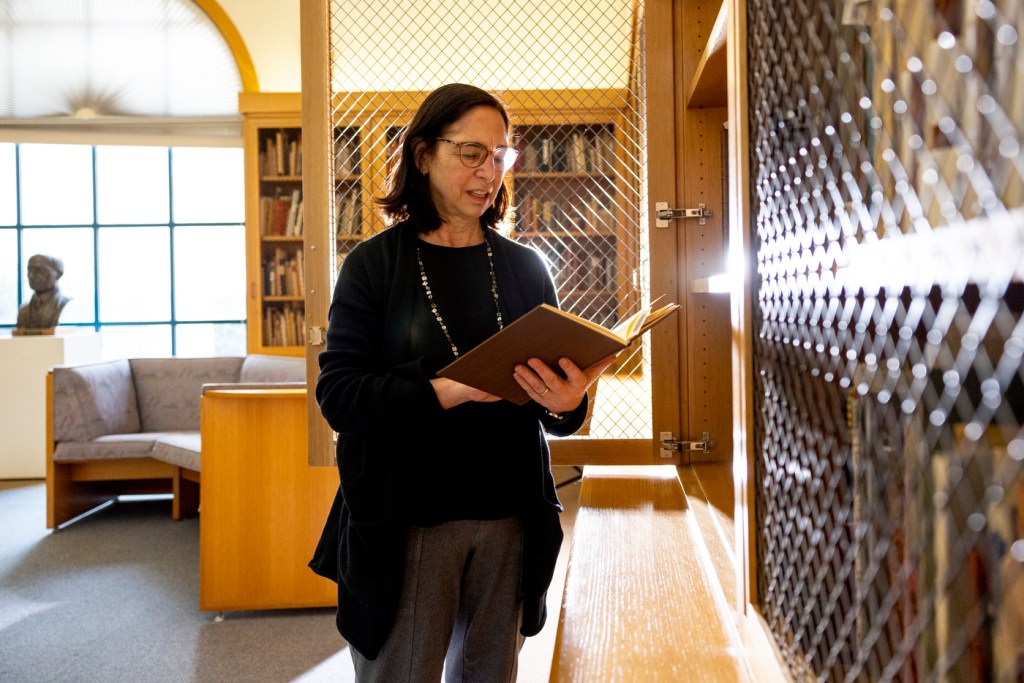
OAKLAND, Calif.—The Elinor Raas Heller Rare Book Room is located inside the F.W. Olin Library on the Mills College at Northeastern University campus. It includes about 20,000 volumes, 10,000 manuscripts, archives and photographs from the 15th century to the present.
But one item stands out, and it’s also one of the oldest—a leaf from a Gutenberg Bible. Printed in 1454 by Johannes Gutenberg in Germany, they are believed to be among the first books mass-produced using movable metal type. Of the 180 made, fewer than 50 exist today.
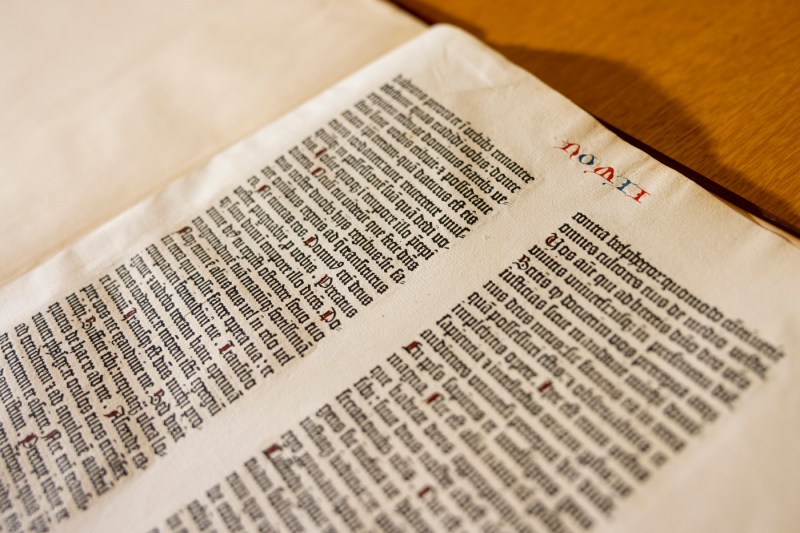
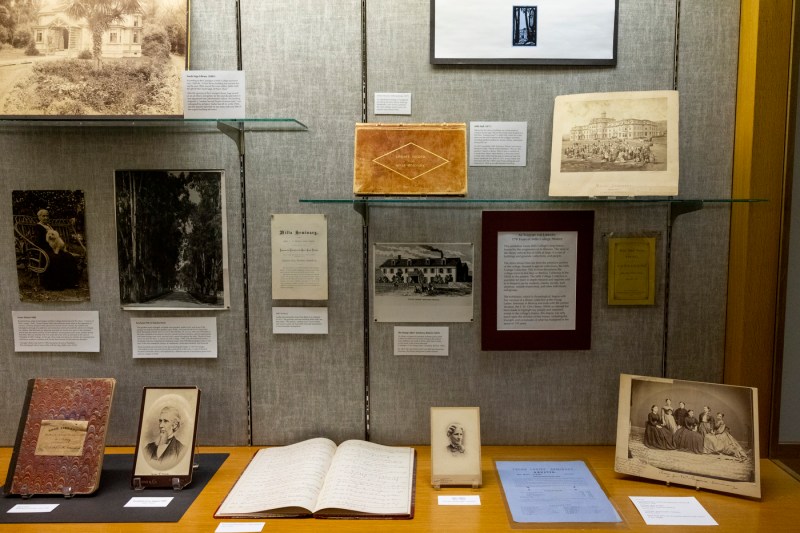
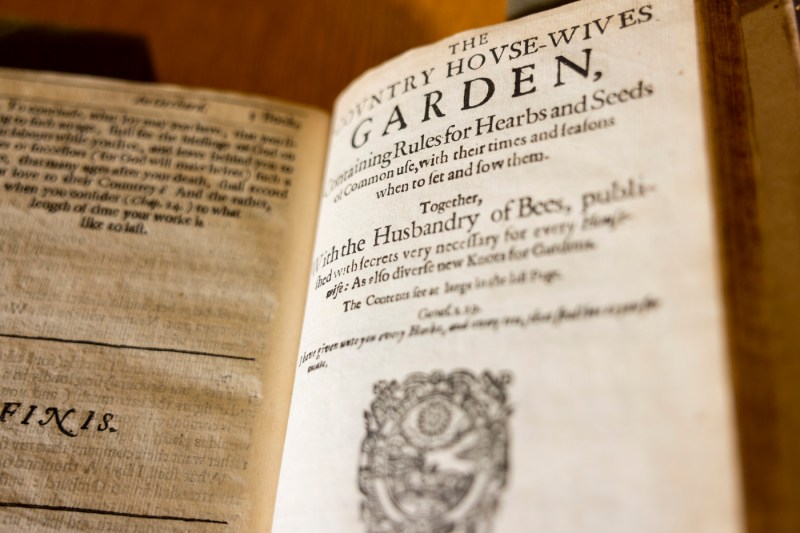
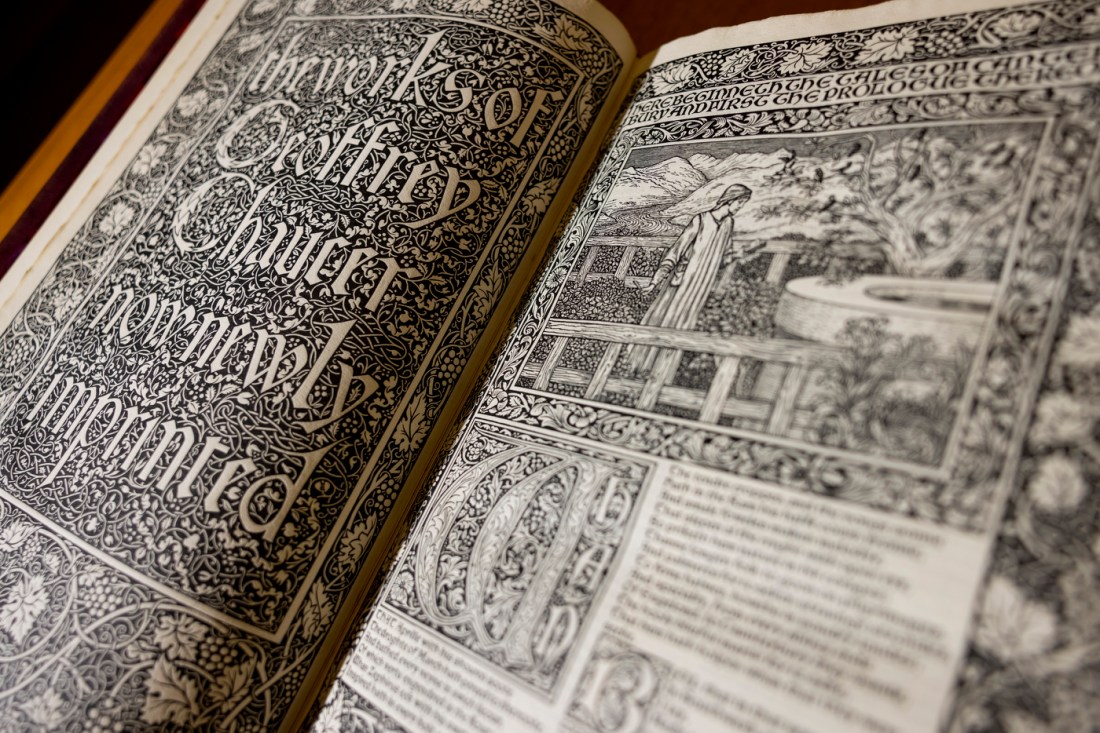
The leaf was donated by Mrs. Theodore Lilienthal in 1980, according to Janice Braun, library director and special collections curator at Mills at Northeastern.
“When I bring it out for presentations, people really respond to it,” Braun says. “It was a revolutionary book, not for its contents but for how it was produced.”
News@Northeastern recently spoke with Braun about the Gutenberg Bible leaf, other items in the Mills at Northeastern special collection and her passion for books and history. Her comments have been edited to add context, and for brevity and clarity.
Where is the Gutenberg Bible leaf kept? What kind of condition is it in? And how often do you show it to visitors?
It’s kept in our rare book vault. People are amazed that it’s in such great shape. I think they expect to see something that’s falling apart or deteriorating, but it’s not. The paper that they made back then was very, very high quality.
I also think a common misconception is that these collections, including the Gutenberg Bible leaf, should be inaccessible because they’re so valuable, but they’re not. We try to create access whenever possible. We have classes and students in here all the time.
In addition to the Gutenberg Bible leaf, what other works are in the early printed books collection?
We have over 1,000 books printed from the mid-15th century to about 1800. One of those is a Florentine edition of Dante’s “La divina commedia” with commentary from Cristoforo Landino, hand-colored engravings after Botticelli and illumination (1481).
Other important works include a corrected second issue of the King James Bible or the “she” Bible (1611), Martin Luther’s translation of the Bible (1539) and John Gerard’s “The herball, or, Generall historie of plantes” (1633 edition).
Our fine press collection contains 36 Kelmscott Press books, including “The Works of Geoffrey Chaucer.”

How did you become the director of the F.W. Olin Library?
I’m originally from San Diego but have lived in the Bay Area most of my life. I received my bachelor’s degree in literature from the University of California, Santa Cruz, and my master’s in library studies from Berkeley.
I began my career as a librarian at Yale, then spent two years at Stanford before coming to Mills in 1995. This was my dream job. I started here as director of the special collections before being promoted to associate library director and then director.
But I never gave up my special collections position. That’s my love. It’s been tricky and a bit challenging, but it seems to work. I kept my office here in the rare books room and never moved up to the director’s office.
Tell me about Beate Sirota Gordon, a Mills graduate who helped write the constitution of Japan.
Beate was a young Jewish woman from Austria. Her father was a famous concert pianist who accepted a teaching position in Japan and moved the family there in 1929. As World War II was about to break out, Beate’s parents began looking for a place to send her and they hit upon this nice women’s college on the West Coast. Beate enrolled at Mills when she was just 16.
She was extremely smart and spoke several languages, including Japanese. In fact, after the attack on Pearl Harbor, she was hired by the U.S. government to monitor broadcasts from Japan. After graduating from Mills and the war ended, she was asked by Gen. Douglas MacArthur to help draft the new Japanese constitution. Beate had a lot of influence. She was the one who pushed to include equal rights for women.
Are Beate’s personal papers in your archives?
After the war, Beate spent most of her career in the performing arts. In 1970, she was named director of New York’s Asia Society. Before she passed away in 2012, I was in contact with her and went to New York twice. I worked with her daughter to get the materials to a point where they could come here, which they did.
Our archive includes most of her personal papers and photographs. But we decided that the Japanese language materials should go to the National Women’s Education Center in Japan, so that’s where the other half of the collection is.
What are some of your most comprehensive collections?
One of the people I like to highlight is Julie Chen, a Mills graduate and internationally known book artist who was on our faculty. She’s now at the University of Wisconsin. It’s not every single thing she’s ever done, but it’s a very good collection of her work.
I’ve put on two big exhibits of her work and published her catalog. When somebody walks in and says, “I hear you have artist books, but I don’t know what those are,” I get out one of Julie’s books and say, “This is an artist book.”
It has features of a book, like pages or sequence, but it has an unconventional structure and may be made of unconventional materials to get across whatever idea the artist is trying to get across. Julie’s books are so well conceived and so well made.
Q: What are some other interesting archives or collections?
The Pauline Oliveros archive is heavily used and parts of it were loaned a couple years ago for retrospective exhibit in Spain. She was big into the development of electronic music and taught at Mills. She’s a cult music figure and very well known in certain circles.
Darius Milhaud, a French composer and conductor, came here in 1939, fleeing Europe, and was given a home and a job by then President Aurelia Reinhardt. His archive is really interesting. It’s not his papers. It’s a collection of his time at Mills.
One of our most unique collections is 400 books by and about poet and musician Patti Smith. No one, not even Patti Smith, has this collection, things like photographs, interviews, clippings and concert posters. Smith was very influential in New York’s punk rock scene during the 1970s.
For media inquiries, please contact media@northeastern.edu.





